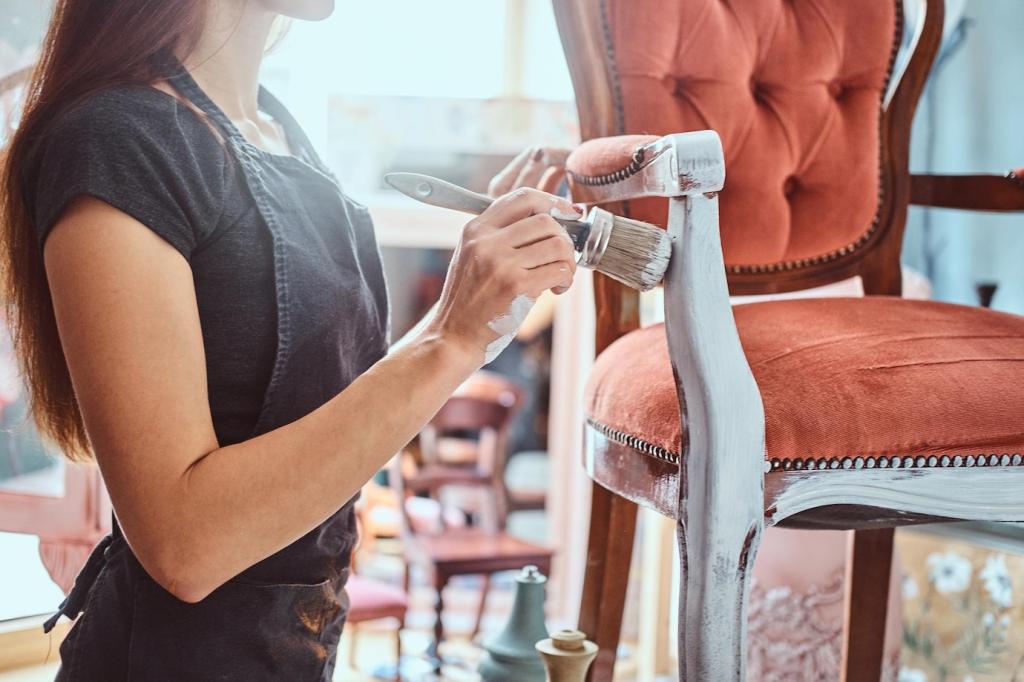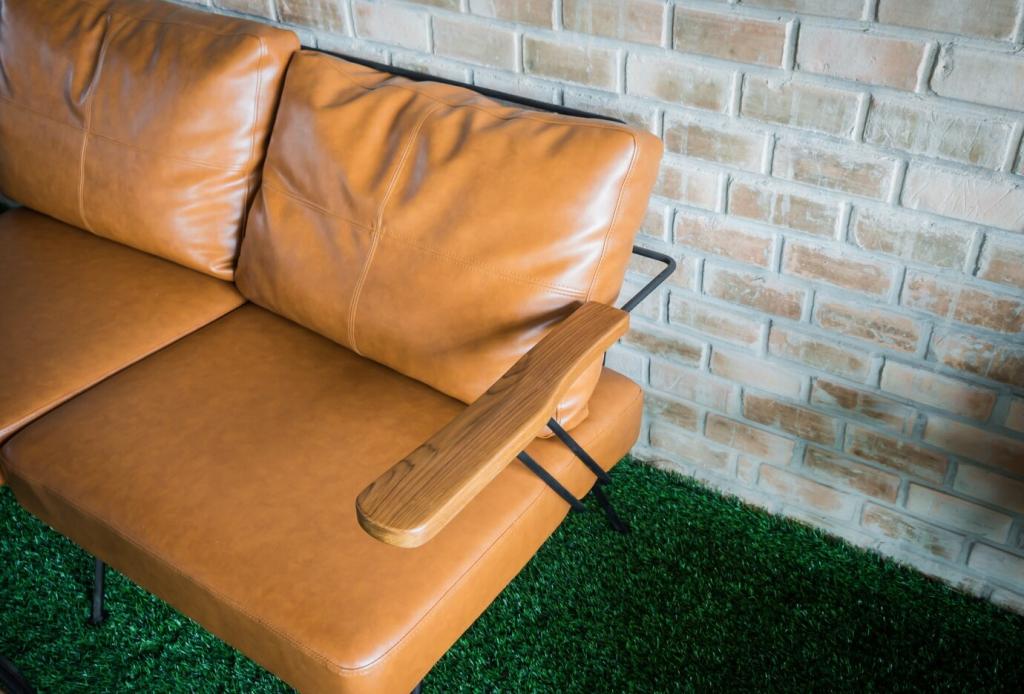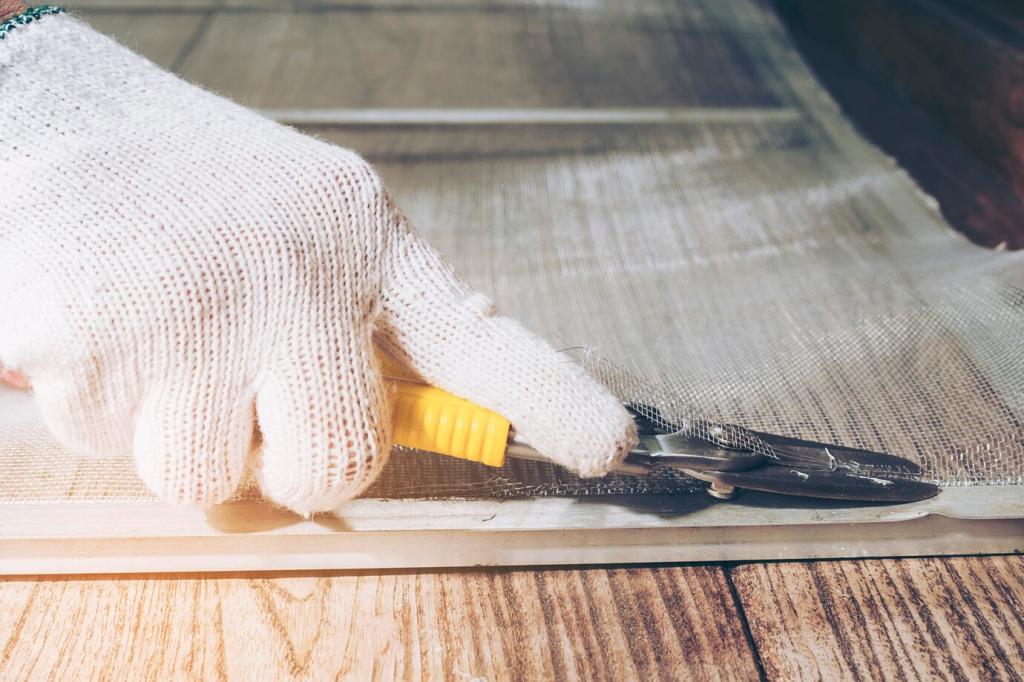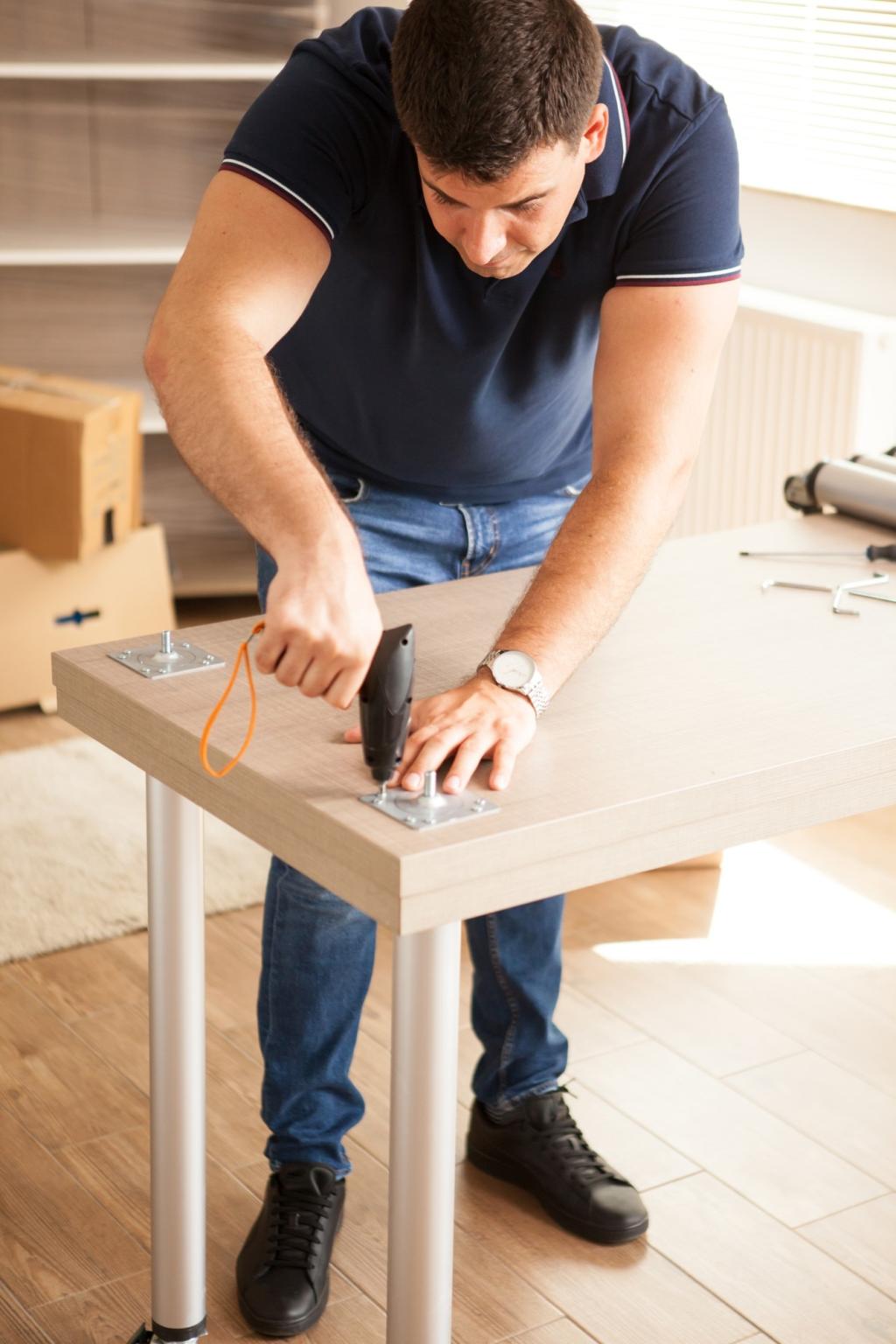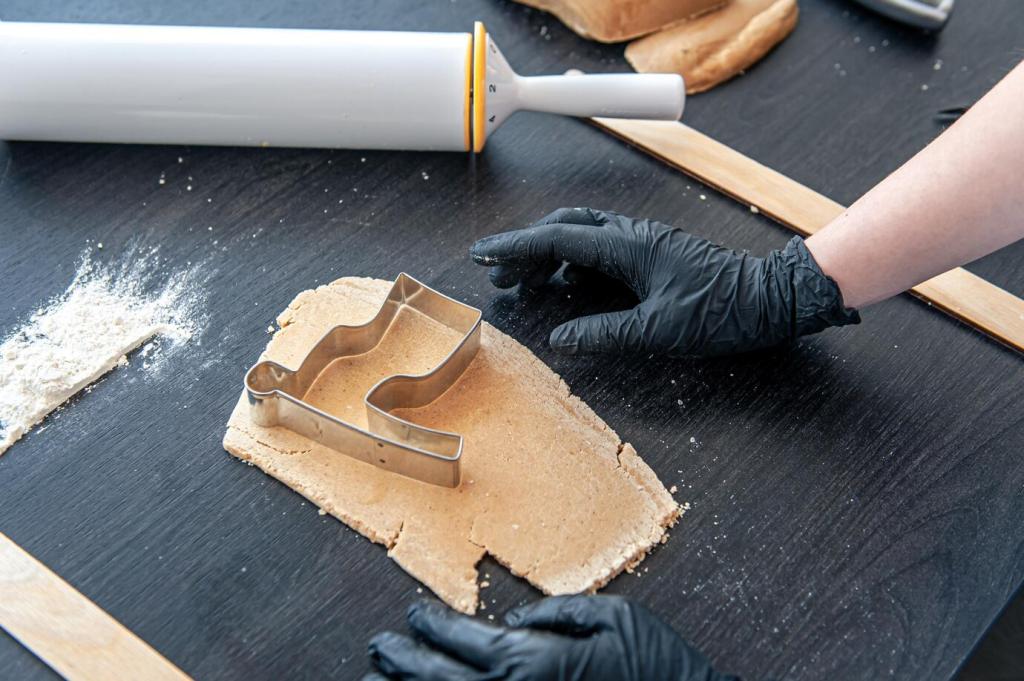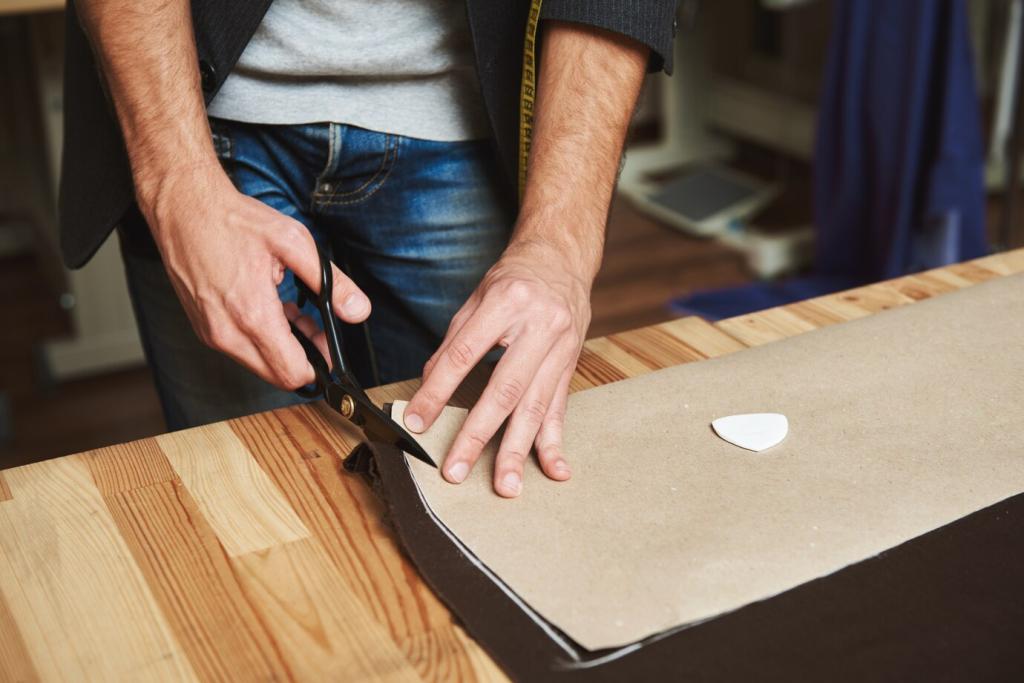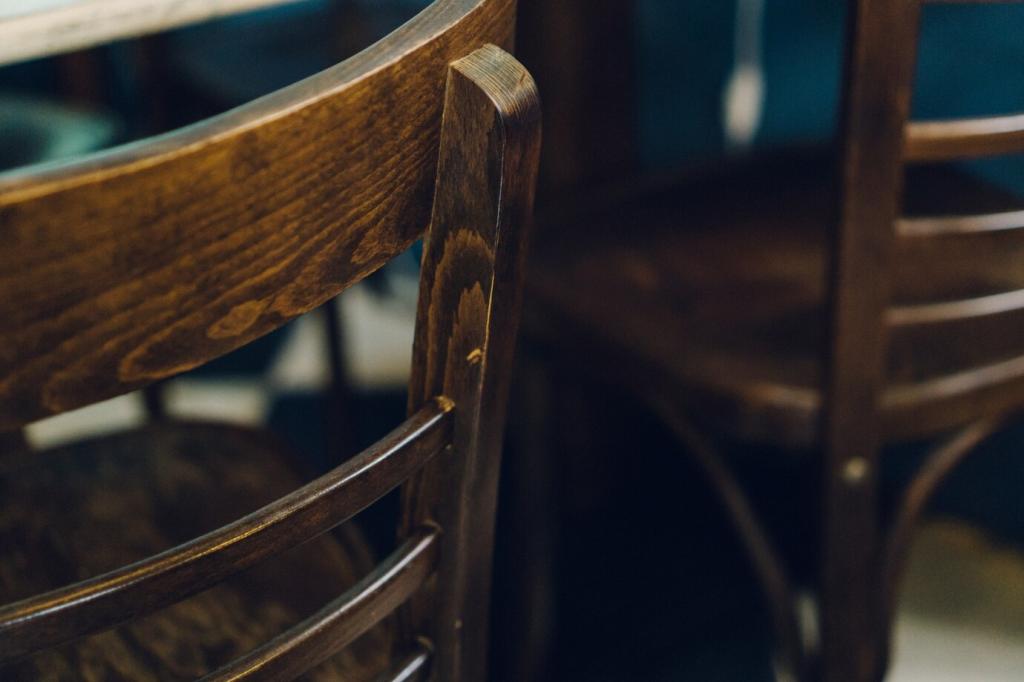Grain, Cuts, and Construction Choices
Quarter-sawn boards, especially in oak, showcase striking ray fleck and move less across the width. Plain-sawn offers bold cathedral grain but greater seasonal movement. For large tabletops, quarter-sawn reduces cupping and gives a refined, stable surface through dry winters and humid summers.
Grain, Cuts, and Construction Choices
End grain excels for chopping blocks, absorbing knife marks and self-healing. Edge grain offers strength and understated pattern for shelves and tops. Face grain displays character and figure. Choose orientation intentionally so the function, look, and longevity support each other gracefully.
Grain, Cuts, and Construction Choices
Alternating growth ring directions in panel glue-ups reduces overall cupping. Align grain for parts that flex, like chair rails. Use breadboard ends to control tabletop movement. Thoughtful board selection prevents cracks, preserves joinery, and keeps furniture sturdy longer under everyday stresses.
Grain, Cuts, and Construction Choices
Lorem ipsum dolor sit amet, consectetur adipiscing elit. Ut elit tellus, luctus nec ullamcorper mattis, pulvinar dapibus leo.

